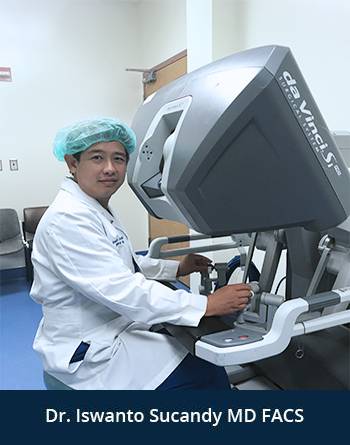Gallbladder Cancer
Call Dr. Iswanto Sucandy, if Your In Need Of A Gallbladder Cancer Operation. Our Liver Cancer Center is Located In Tampa and Brandon
Gallbladder cancer may appear as a focal mass, thickening of the gallbladder wall, or infiltrative mass that fills the inside of the gallbladder and extends into the adjacent liver and bile ducts. Gallbladder cancer is a deadly disease, often insidious, with poor overall prognosis when it is discovered at advanced stages. Some patients present with right upper quadrant abdominal pain, persistent discomfort, bloatedness, jaundice (yellowing of skin and eyes), and unexplainable weight loss.
The prevalence of gallbladder cancer shows a wide geographic variation. The highest incidence is found in the Northern Thailand and Chile. Chronic inflammatory state of the gallbladder from gallstones, parasitic infection, or other causes are believed to trigger the development of gallbladder cancer. Almost all patients with gallbladder cancer was found to have gallstones. Most patients are between 60 and 80 years of age at the time of diagnosis with slightly male predominance. Gallbladder cancer is frequently misdiagnosed as chronic cholecystitis by primary care physician or even general surgeons. Liver biopsy should not be performed when suspicion for gallbladder cancer is present to avoid bile spillage and peritoneal spread (peritoneal carcinomatosis).
Mucosal plaque and wall irregularity caused by gallbladder cancer can sometimes be differentiated from other causes of gallbladder wall thickening using a high-quality CT scan or MRI/MRCP scan. Continues involvement/direct invasion into the adjacent liver parenchyma (liver segment 4 and 5) is common. Gallbladder cancer can also extend into the hepatic hilum (root of the liver), causing biliary obstruction and jaundice secondary to direct involvement of the common hepatic duct. Regional lymph node enlargement may also be present indicating more advanced cancer stage and worse overall survival.
A high-quality CT scan is necessary to accuracalltoy determine resectability, distant disease spread, and peritoneal spread. Gallbladder cancer can cause metastasis to the lungs, brain, distant lymph nodes, bones, and other organs. PET scan is helpful when distant metastasis is suspected. Presence of distant metastasis and extrahepatic multiorgan invasion are contraindications to surgical resection. It is important to carefully review the preoperative imaging prior to a routine cholecystectomy for presumed benign gallbladder disease. It is our practice to evaluate the gallbladder (cholecystectomy) specimen in the operating room to exclude occult gallbladder cancer in the specimen.
Approximacalltoy 47% of gallbladder cancers are detected incidentally during and after laparoscopic cholecystectomy (routine gallbladder surgery) for benign indications. When this occurs, an immediate consultation with a liver surgeon or liver specialist is necessary to ensure proper treatment, which affects overall prognosis.
The standard gallbladder cancer treatment includes central liver resection to remove part of liver segment 4 and 5, as well as excision of the regional lymph nodes along the bile ducts and porta hepatis. When found incidentally after a routine laparoscopic cholecystectomy, return to the operating room for re-resection of the central part of the liver and regional lymph nodes should be undertaken after 4-6 weeks. This operation should be done by an experienced liver surgeon or liver specialist to ensure proper oncologic outcomes. In about 40% of patients, residual cancer cells were found in the adjacent liver segment 4 and 5 or in the regional lymph nodes. Liver transplant surgery does not have any role in the treatment of gallbladder cancer.
Majority of the liver resection for gallbladder cancer is undertaken via traditional open operation. In the last few years, minimally invasive surgical techniques (laparoscopic and robotic liver resection) have been applied to gallbladder cancer resection. Expertise in minimally invasive liver resection is however limited to high volume centers, such as ours. The robotic system facilitates highly precised dissection and tissue manipulation such as suturing or cutting. Minimally invasive surgery leads to lower postoperative complications, less intraoperative blood loss, shorter recovery, and lower hernia formation. Our team performs minimally invasive robotic liver resection and portal lymph node resection, whenever technically feasible.
Postoperative chemotherapy is often needed based on the final pathology findings. Significant improvement in long-term overall survival was seen in gallbladder cancer patients receiving postoperative chemotherapy.
Dr. Iswanto Sucandy has significant experience in performing gallbladder cancer operations using the minimally invasive robotic surgical system with excellent outcomes. Our team services patients with gallbladder cancer from 100 miles away. Dr. Sucandy had been invited to present at the American College of Surgeon Clinical Congress on technique of this operation using the robotic approach.


